Welcome to Turf Medic’s Greencastle lawn care guide where we tackle one of the most common queries homeowners have: “Does overseeding work?” In this article, our Turf Medic experts divulge their extensive knowledge and share proven overseed tips that guarantee a lush, dense lawn. Whether you’re trying to revitalize a patchy yard or enhance the overall look and health of your turf, understanding the ins and outs is crucial. So, let’s delve into the world of robust lawn care practices together.
Does Overseeding Work? – Your Guide to a Lush Lawn
When considering whether overseeding is effective for your lawn, it is essential to understand the process and benefits it can bring. Overseeding is the practice of sowing new grass seed into existing turf, which can significantly enhance lawn density, appearance, and overall health. At Turf Medic, we’ve seen firsthand how this process can transform lawns in Greencastle with proper technique and timing. The success largely depends on the preparation of the soil, the quality of the seed, and the care taken after the application. Providing your lawn with these services during the appropriate season ensures better germination and integration with existing grass. It’s imperative to keep the soil consistently moist during the seedlings’ developmental stage, as doing so will encourage robust root growth. If you’re diligent with these practices, this work will reward you with a more resilient lawn that’s better equipped to withstand pests, diseases, and extreme weather conditions. Not to mention, it can fill in bare patches and contribute to a lush, green carpet that elevates your property’s beauty. For those wondering whether this work is worth the investment, Turf Medic advises that, with the right approach, it’s a resounding yes. If your lawn’s looking thin or tired, overseeding might just be the reviving touch it needs.
6 Tips for Overseeding Your Lawn
- Test Soil and Address Issues: Before overseeding, conduct a soil test to determine pH levels and nutrient deficiencies. Amend soil based on the test results to create an optimal growing environment for new grass seed.
- Choose the Right Seed: Select a grass seed blend that is suitable for your climate, sunlight conditions, and the existing grass type in your lawn. Make sure the new seed will integrate well with your current lawn.
- Prepare the Lawn: Mow your lawn to a short height and remove the clippings. Then, use a dethatching rake or a power dethatcher to remove thatch and loosen the top layer of soil. This helps the seed make good contact with the soil.
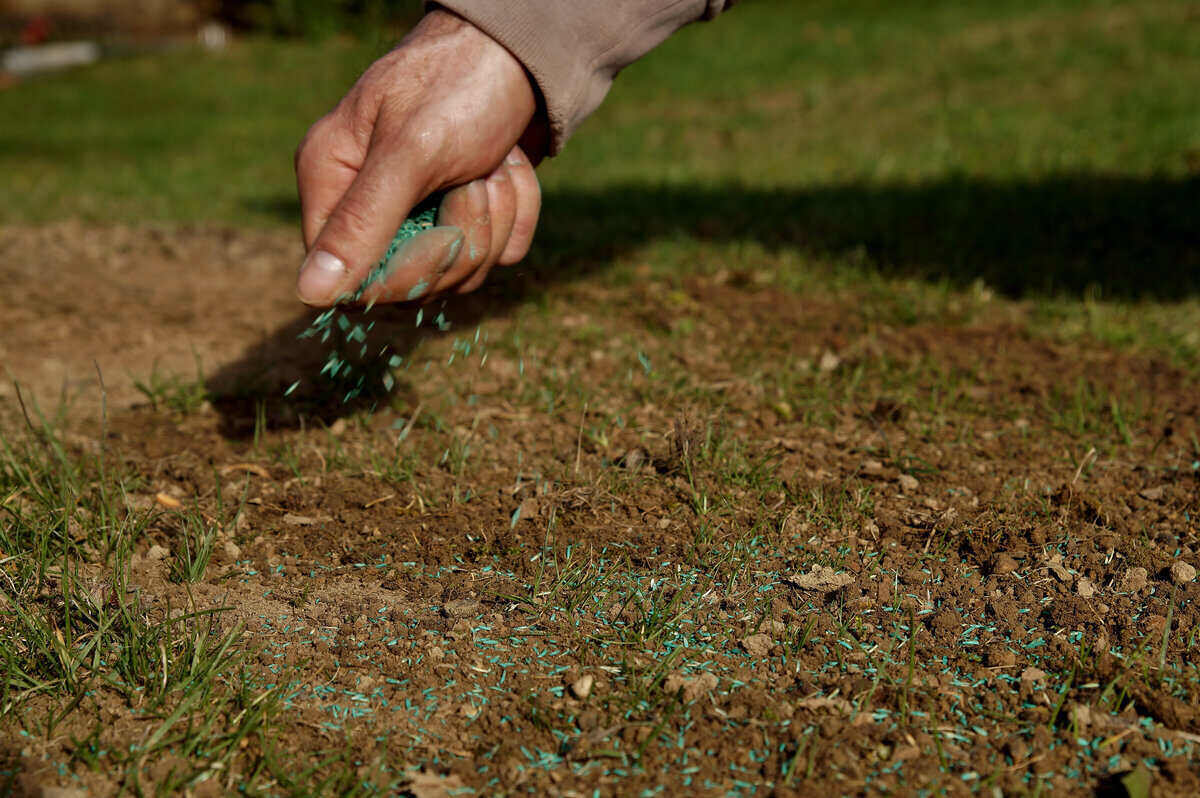
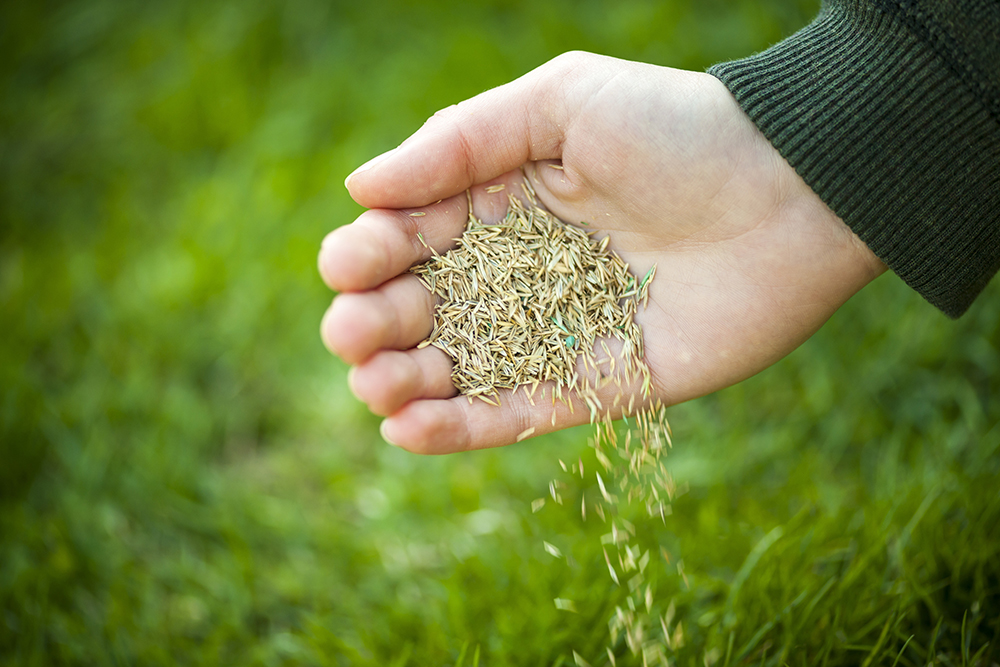
4. Spread the Seed Evenly: Use a broadcast spreader or a hand spreader to distribute the seed evenly across the lawn. Apply half the seed in a north-south direction and the other half in an east-west direction for thorough coverage.
5. Apply Starter Fertilizer: Use a starter fertilizer high in phosphorus to encourage root growth. Follow the manufacturer’s recommended rates of application to ensure you provide the right amount of nutrients without causing damage to the seedlings.
6.Water Regularly: After overseeding, water the lawn lightly but frequently to keep the soil consistently moist until the seeds germinate. Gradually reduce watering to encourage deep root growth once the seedlings are established.
Understanding How Overseeding Can Enhance Your Lawn Care Routine
Delving into the depths of lawn care, it’s evident that achieving a vibrant, thick turf requires more than just routine mowing and watering. At Turf Medic, we understand the intricacies of lawn care and the pivotal role of overseeding in rejuvenating and maintaining lush grass. Overseeding, a process entailing the spreading of seed over existing turf, is instrumental in repairing bare spots, enhancing turf density, and improving your lawn’s overall health and appearance. When the lawn care routine comprises regular overseeding, the introduction of new grass varieties can bolster your lawn’s resilience against drought, disease, and pests.
However, it’s not just about scattering seed; it’s about meticulous timing, selecting the right seed, and proper soil contact. Lawn care experts at Turf Medic are adept at identifying the optimal seeding window and employing techniques that ensure seed-to-soil contact for superior germination rates. Remember, a successful endeavor hinges on understanding the unique needs of your lawn care agenda. Integrating this into your lawn care regimen could be the turning point towards achieving that luscious, envy-inspiring lawn you’ve always coveted. Trust in Turf Medic’s expertise for a lawn care solution that faithfully delivers.
Why Aeration and Overseeding Work Together for Healthier Grass
At the heart of lush, vibrant lawns lies a powerful duo: aeration and overseeding. They work in tandem to revitalize your lawn, creating the optimal environment for grass growth. Aeration is the process that relieves soil compaction, allowing your lawn to breathe and facilitate essential nutrient uptake. By pulling out small plugs of soil during aeration, your lawn’s root system can expand more effectively. Overseeding, in turn, takes advantage of the loosened soil, providing new grass seeds the perfect bed in which to germinate. At Turf Medic, we’ve seen how it works best when combined with aeration—it’s a match made in Greencastle lawn care heaven.
The reason it works so well after aeration is simple: the seeds find a home in the openings created by the aeration process. This close contact with the soil boosts the seeds’ potential to sprout and integrates them seamlessly into the existing turf. Turf Medic recommends it immediately after aeration for the best results—if you’re looking to ensure that the work pays off, don’t skip the crucial aeration step. Not only does each aeration pass help, but multiple passes can be even more beneficial, allowing for greater seed-to-soil contact and enhancing the effort. Trust Turf Medic to show you not just that it works, but how it works in conjunction with *aeration* to give you the lush, green lawn you desire.
How to Prepare Your Lawn
A crucial step in lawn care, particularly when you’re looking to boost your turf’s health and appearance, is proper preparation for lawn aeration and overseeding. As a seasoned professional at Turf Medic Lawn Care, I can’t stress enough the importance of these processes. Before you overseed, it’s essential to ensure that your lawn is optimally prepared. Preparing for aeration involves clearing the lawn of debris and moistening the soil. This helps the aerator penetrate the turf more effectively, allowing for better seed-to-soil contact when you overseed. Additionally, aeration ameliorates soil compaction, letting roots expand and water and nutrients circulate efficiently.

Time your overseeding carefully; doing it following aeration maximizes the seeds’ potential to germinate and take root. To prepare, mow your lawn to a shorter length than usual, and remove the grass clippings to avoid smothering the new seeds. If you’re planning to *overseed*, do it generously across your lawn, especially in bare or thin areas. Furthermore, consistent care afterwards—watering, feeding, and gentle mowing—promotes strong germination and establishment of the new grass. Stick to these care steps, and you’ll certainly create a fertile environment where your lawn can thrive.
The Benefits of Overseeding: Does it Really Work?
Many homeowners ask, “Does overseeding really work?” Turf Medic provides the answers with definitive care tips for your lawn. Indeed, overseeding can be a pivotal practice in cultivating a healthier, more robust turf. One of the principal benefits of overseeding is its ability to introduce resilient grass varieties which can rejuvenate a lawn, affording it a denser, more vibrant appearance. It works by filling in areas where grass is sparse, thus creating a lush, seamless expanse of greenery.
The effectiveness is not in question when applied correctly. It’s a key component of a comprehensive lawn care routine designed to enhance the overall health and aesthetics of your yard. By integrating these techniques, you give your lawn an advantage in battling wear, tear, and environmental stressors. When asking if it works, note that successful outcomes depend on choosing the right seed mix, timing the application, and maintaining proper aftercare, such as watering and fertilization.
For those who wonder if overseeding is really necessary, consider its ability to mitigate issues like patchiness and weed invasion, resulting in a uniform growth that makes a statement. When paired with aeration, overseeding works synergistically to enable nutrients and air to reach the root zone, promoting robust growth. Turf Medic confirms that it does, in fact, yield tangible results, making it a worthwhile endeavor for anyone aspiring to elevate their lawn to the pinnacle of verdure and vigor.
Does Turf Medic Recommend Overseeding? What Works Best
At Turf Medic, we understand the critical role a lush lawn plays in the aesthetic and health of your property. We often recommend overseeding as a cornerstone practice in a comprehensive lawn care routine, especially when aimed at achieving the best results. The question isn’t just “does overseeding work?” but rather “how can it be optimized to ensure it truly benefits your turf?” The key lies in quality seed selection and proper application timing. Expert tips from Turf Medic highlight the importance of integrating pest control measures during the lawn care process to minimize the risk of new grass being compromised. By selecting high-grade seed, we ensure that the robust new growth has the best chance of thriving.

We emphasize that overseed effectiveness is often maximized when coupled with aeration, a process that facilitates better seed-to-soil contact and enhances nutrient uptake. Does overseeding alone do the trick? Not necessarily. Without following best practices and considering regional climate factors, it may not yield the desired thickening effect on your lawn. Trust in Turf Medic for tailored overseed advice – it’s not simply about scattering seed; it’s about nurturing the groundwork for your lawn to flourish with thorough pest control and professional lawn care guidance.
The Right Way to Overseed Your Lawn – A Step-By-Step Guide
Overseeding your lawn isn’t just about scattering seed and hoping for the best; it’s a thoughtful process that, when done the right way, can significantly enhance your lawn’s health and appearance. At Turf Medic, we understand the nuances of proper lawn care, especially the steps necessary to successfully overseed your grasses. To begin, you’ll want to select the appropriate seed that matches the characteristics of your existing turf and local climate. The next step in our step-by-step guide involves preparing the soil, which often pairs with aeration, a service that Turf Medic highly recommends as it facilitates better seed-to-soil contact and germination. While overseeding, it’s crucial to distribute the seed evenly and comprehensively to avoid patchy areas. Following seeding, adequate care comprises watering and fertilizing as needed to nurture the young grasses. At Turf Medic, we emphasize that following these guidance steps can significantly improve the effectiveness of overseeding, yielding a denser and more resilient lawn. For those looking for a lush lawn transformation, Turf Medic stands by its recommendation when performed right, detailing the process in this comprehensive guide, tailoring services to the unique needs of each lawn in the Greencastle community.
5 Steps to Overseeding Your Lawn
1. Prepare the Lawn:
- Mow your existing lawn to a shorter length than usual to ensure seed-to-soil contact.
- Rake the lawn to remove thatch, debris, and dead grass to further improve seed contact with the soil.
- Aerate the lawn to relieve compaction and improve water, nutrient, and oxygen penetration.
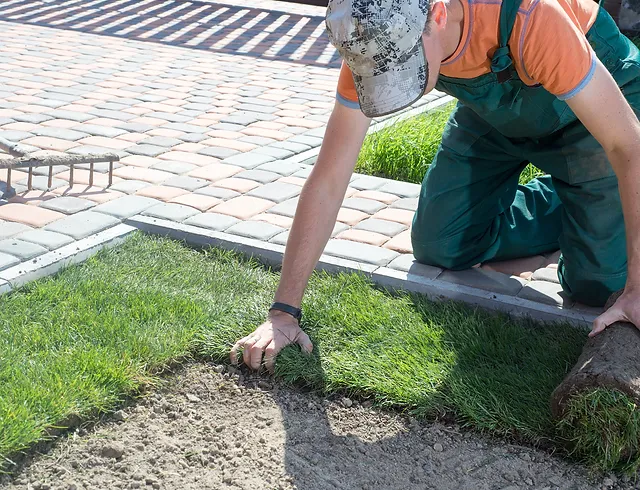
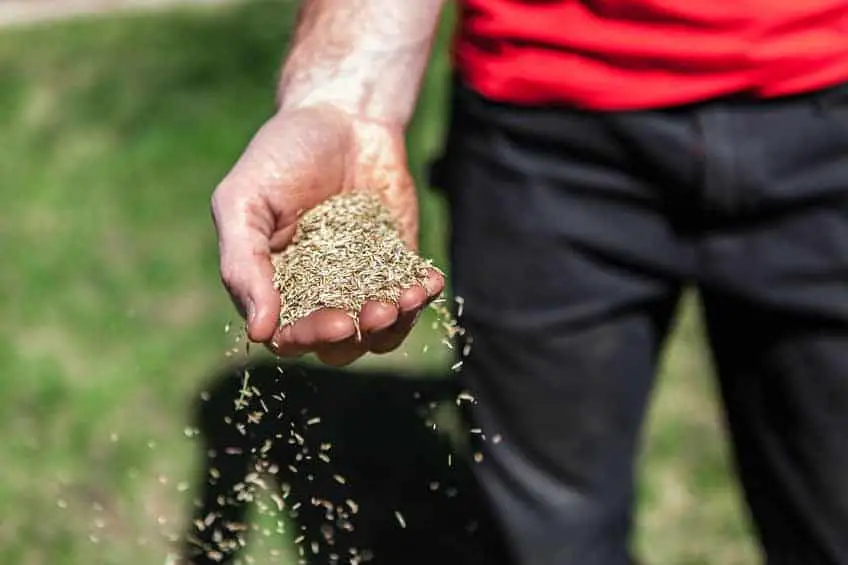
2. Select the Right Seed:
- Choose a grass seed blend that matches your climate, sun exposure, and the type of existing grass.
- Ensure the seed is appropriate for the season in which you are planting, whether it be cool-season or warm-season grass.
3. Spread the Seed:
- Apply the grass seed evenly across the lawn using a broadcast spreader, drop spreader, or by hand for small areas.
- Follow the recommended seeding rate specified on the seed package for optimal results.
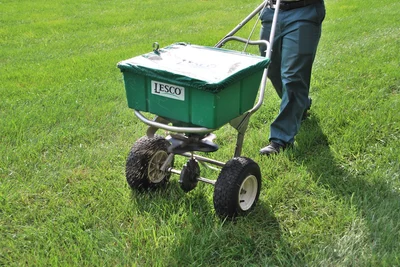
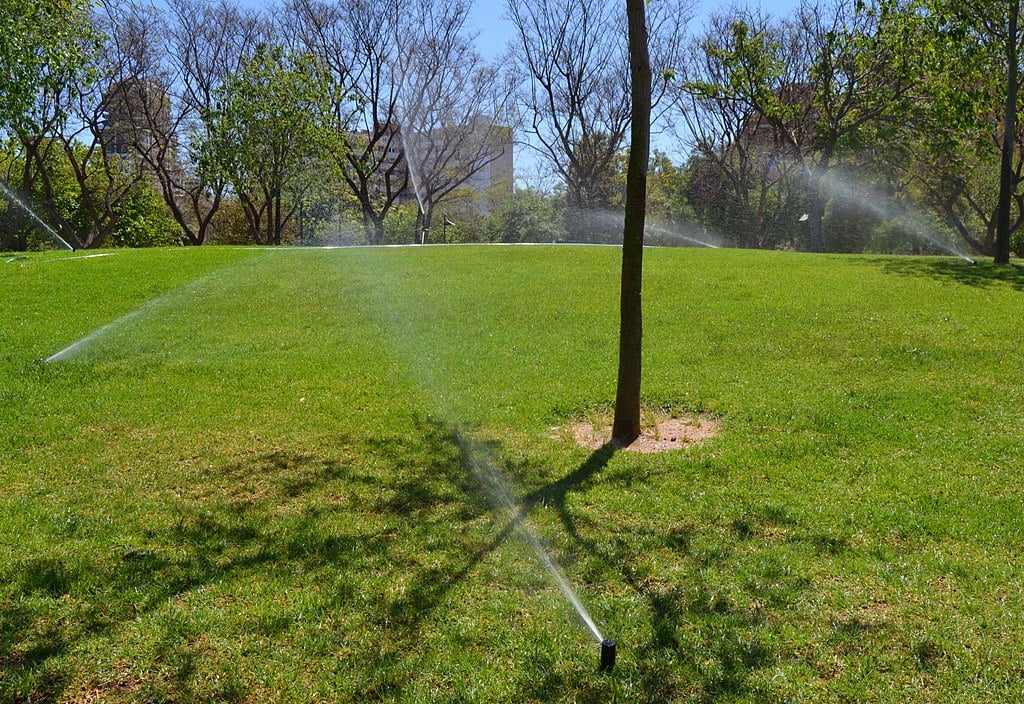
4. Fertilize and Water:
- Apply a starter fertilizer to provide essential nutrients that will aid in germination and early growth.
- Water the lawn lightly but consistently to keep the soil moist until the seeds germinate and establish. Typically, this means watering once or twice a day depending on weather conditions.
5. Maintain the Lawn:
- Continue to water the new grass regularly, reducing frequency as it becomes established.
- Avoid mowing until the new grass is at least 3 inches tall and mow only the top third of the grass blades at a time.
- Monitor for weeds and apply post-emergent herbicides if necessary, making sure they are safe for use on new grass.
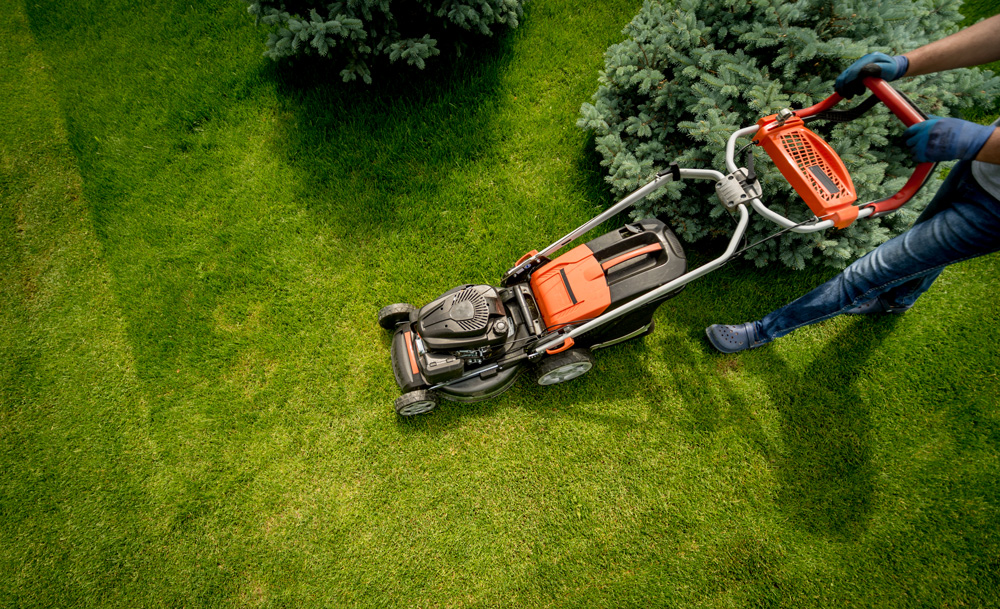
Turf Medic’s Proven Methods
At Turf Medic Greencastle Lawn Care, we understand the pivotal role this plays in maintaining the resilience and beauty of your lawn. Our proven methods assure that your turf receives an optimal blend of grasses, specifically chosen to enhance and sustain its lushness throughout the seasons. By carefully integrating this into your lawn care routine, we address thinning areas, improve the density of your lawn, and introduce enhanced grass varieties that are more tolerant of drought, shade, and disease.
Overseeding isn’t just casting seeds with a hopeful gaze toward the sky; it’s a strategic act of lawn care that, when done correctly, yields remarkable results. That’s why at Turf Medic, we stress the importance of preparation, recommending that this be paired with lawn aeration to maximise seed-to-soil contact. This combination ensures the seed’s successful germination and establishment, providing a robust base for newer grasses to flourish alongside the existing turf.
Our clients have seen firsthand how it contributes to a denser, greener, and more resilient lawn. At Turf Medic, we don’t just recommend it; we champion it as an essential step in achieving and maintaining the lawn you’ve always desired. Follow our step-by-step guide detailed in our series of articles to ensure you’re not merely overseeding but are pioneering the way forward for a verdant, thriving lawn.
Tips from Turf Medic: Do’s and Don’ts for Success
Overseeding is a cornerstone of lawn care services championed by Turf Medic to ensure your turf remains dense, vibrant, and robust. Our commitment to exceptional service is evident through our meticulously crafted tips that aim for success in every square inch of your lawn. At Turf Medic, we’ve outlined several do’s, such as selecting the right seed for your specific lawn conditions and ensuring soil contact for the seeds. Our services stress the importance of watering appropriately afterward, fortifying young seedlings as they develop. Conversely, the don’ts are just as crucial. Do not overlook the timing of your endeavor—early fall often affords the best conditions for seed germination and root development. Also, avoid skimping on seed quality or coverage; uniform distribution is key.
Our lawn care expertise, combined with these tips, underscores the effectiveness of this process when done correctly. Yet, it’s the integration of services like aeration and overseeding that truly set the stage for success. These services create a hospitable environment for new grass growth, enhancing water and nutrient uptake. While preparation is essential, the right way involves patience and adherence to a maintenance routine post-application. Join Turf Medic in recognizing that overseeding is more than a mere task; it’s an investment in the health and beauty of your lawn. Trust in our proven methods, and witness how Turf Medic’s guidance propels your lawn care routine to the pinnacle of success.

Recent Comments